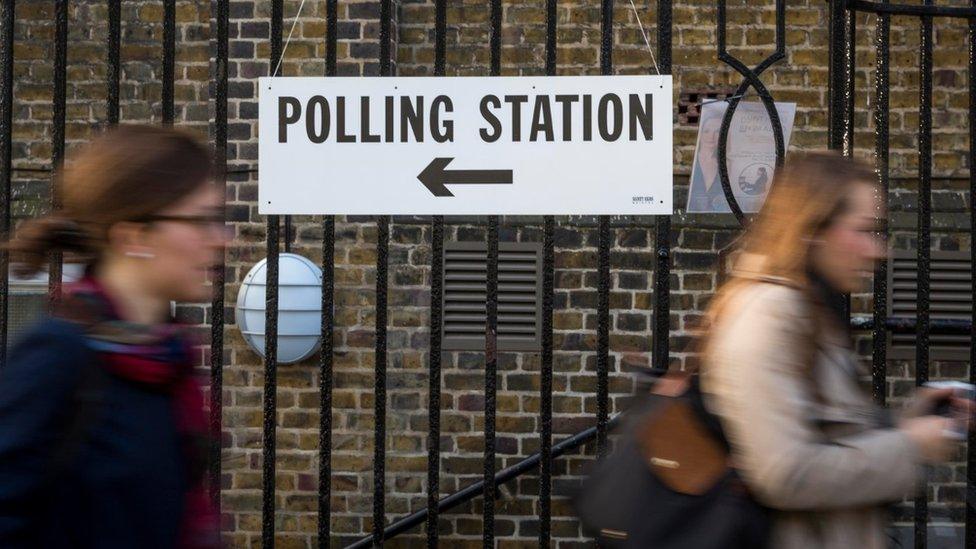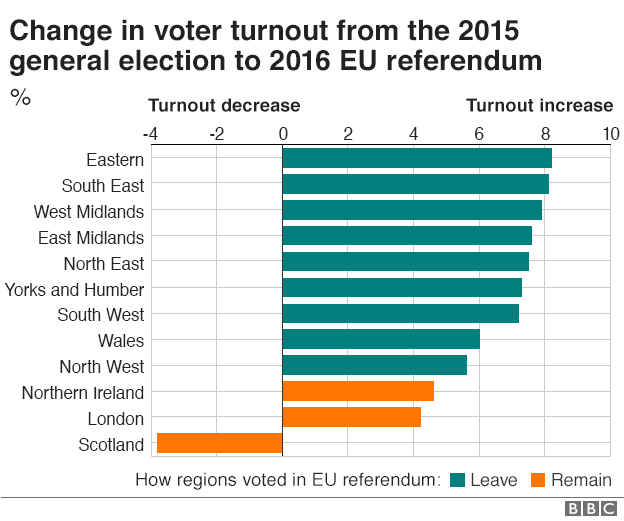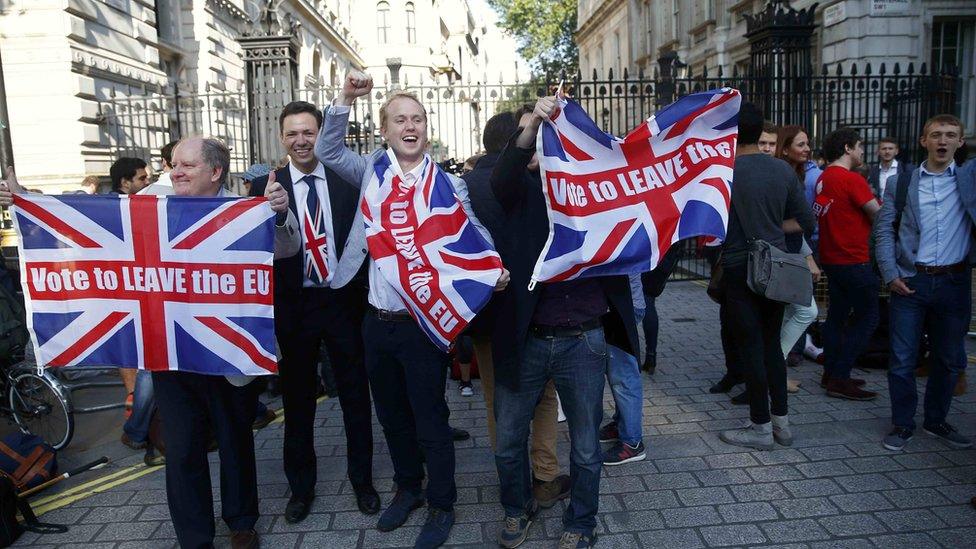General election 2017: The mystery of the three million 'extra' voters
- Published

We know that almost three million extra people turned out to vote in the EU referendum. Saying who they are - and what happens if they reappear - is where it gets difficult.
One of the most striking features of the June 2016 referendum on EU membership - apart from the decision to leave itself - was the substantial increase in turnout.
Broadly speaking, 2.9 million more people voted in the referendum, compared with the May 2015 general election.
Turnout in England in the referendum was the largest since the 1992 general election; and in Wales since the 1997 general election.
Yet we know absolutely nothing about who these millions are.
Their gender, age and socio-economic background are all a complete mystery.
So too is how they voted.
There was a clutch of on-the-day polls among people who had turned-out.
But none of these questionnaires was designed to record the unexpected arrival of a great host of additional voters.

What we do know, however, is where they appeared on referendum day.
Across England, an additional 2.89 million voters crowded into polling stations - a seven point increase on the 2015 general election.
In Wales the increase was six points; and in Northern Ireland it was just under five points.
Only Scotland registered a small decrease, of just under four points.
Among the nine English regions, the greatest increases in turnout mostly occurred in those that delivered the biggest majorities for Leave: Eastern, East Midlands, North East and West Midlands.
The exception was the South East region, where the second largest increase - of 8.1% - sat alongside the smallest pro-Leave majority - of 3.6% - across the whole UK.
We will never know whether that result reflected extra voters for Remain who narrowed the Leave majority, or extra Leave voters who thwarted a potentially narrow Remain victory there.
Northern Ireland and London - which voted Remain alongside Scotland - saw comparatively small increases in voter turnout.
However, the fact that extra voters were most apparent in Leave areas cannot be taken as proof that they were in favour of quitting the EU.
Similarly, as tantalising a prospect as it may be, it is not possible to say that they would be more likely to vote for one party over another at an election.
The real mystery is whether those additional voters in 2016 will come out again to vote in the 2017 general election - and what difference they could make.

It is not known whether or not the extra voters helped the Leave campaign
There is no guarantee that they will, given their opting out of the previous general election.
Are they people who are totally dissatisfied with the political system and became serial non-voters but were unable to resist the chance to give the establishment a thoroughly good kicking at the referendum?
If so, there seems little chance that they will appear again on 8 June 2017.
On the other hand, some may be tempted to vote for the party they consider most likely to put the brakes on Brexit; others to support the party they think truly believes in the UK outside Europe.
If only we knew a bit more about them.

Are you one of the three million who voted in the EU referendum but didn't vote in the general election in 2015? Get in touch to tell us how you made your decision and whether you plan to vote in the election of 8 June.
You can also contact us in the following ways:
WhatsApp: +44 7525 900971
Tweet: @BBC_HaveYourSay, external
Send an SMS or MMS to 61124

About this piece
This analysis piece was commissioned by the BBC from an expert working for an outside organisation.
David Cowling is visiting senior research fellow, external in the Policy Institute at King's College London. He is also the former editor of the BBC Political Research Unit.
